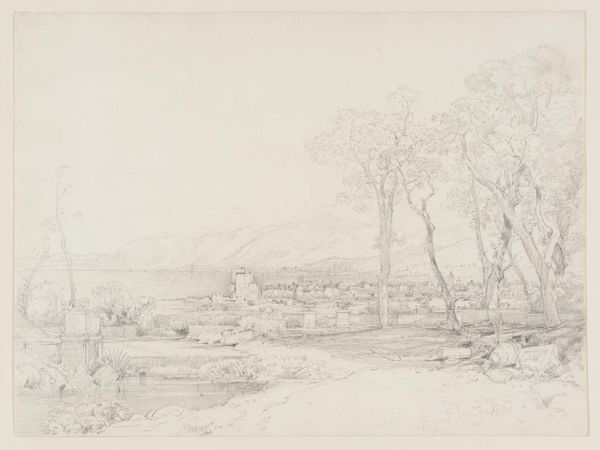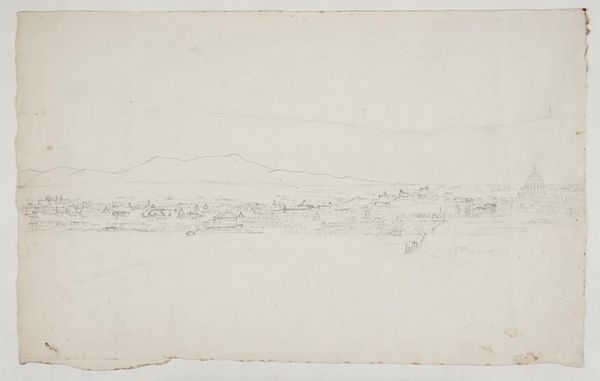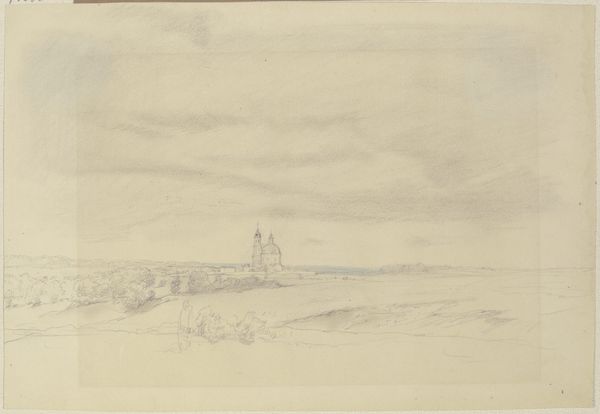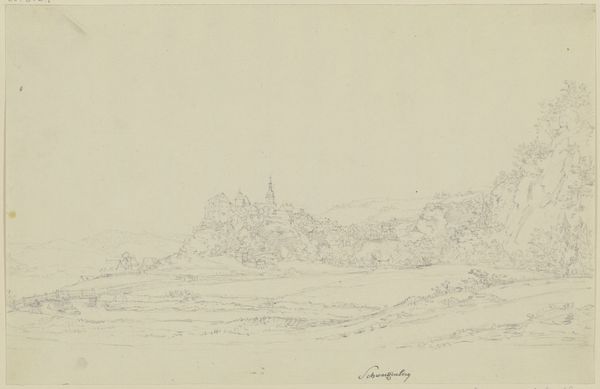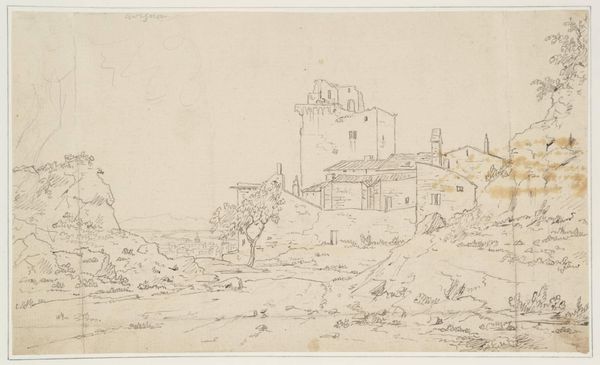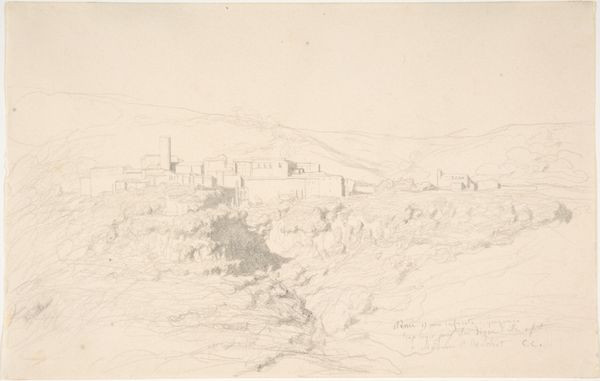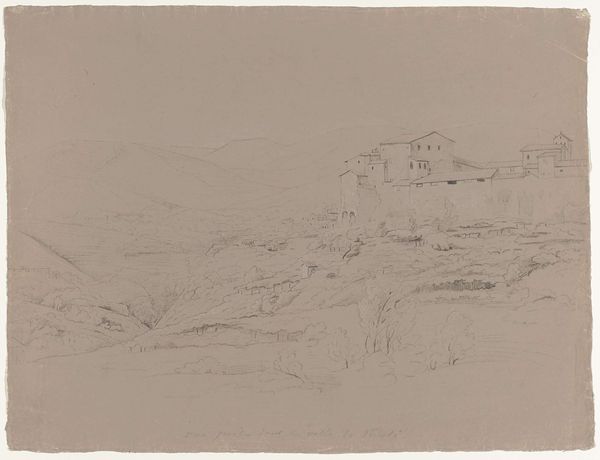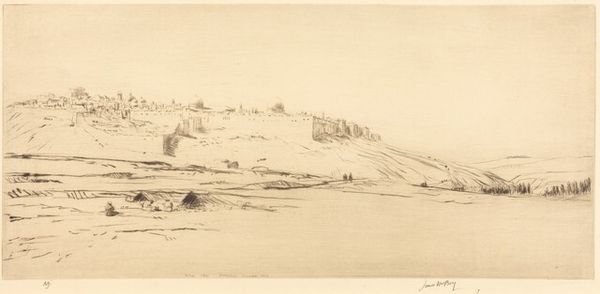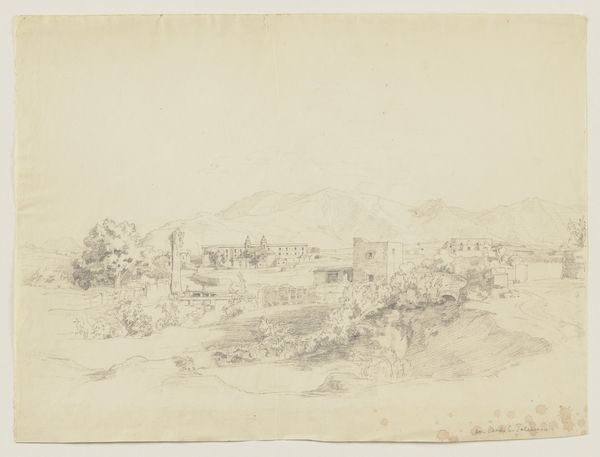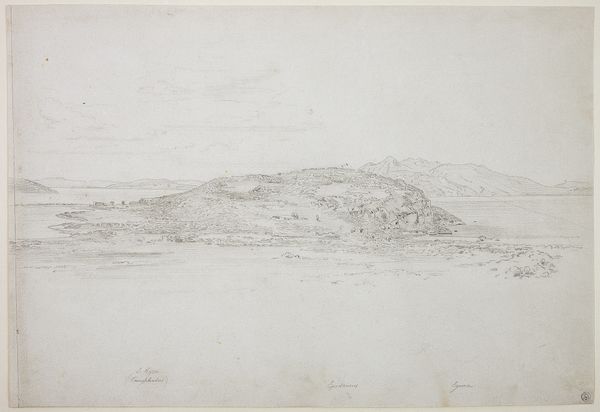
drawing, pencil
#
drawing
#
landscape
#
romanticism
#
pencil
#
cityscape
Dimensions: 171 mm (height) x 253 mm (width) (bladmaal)
Editor: This drawing by Ditlev Blunck, titled "Firenze med floden Arno i forgrunden," or "Florence with the River Arno in the Foreground," dates back to 1832. Rendered in pencil, it captures a cityscape that feels both delicate and grand. What stands out to me is the sheer breadth of the scene – the mountains in the background create a kind of natural proscenium. What do you make of it? Curator: It’s interesting to consider this piece in relation to the Grand Tour phenomenon. Blunck, a Danish artist, would have been participating in a well-established tradition of Northern European artists travelling to Italy for inspiration and artistic development. But look at the perspective, slightly distant and observational. Does it feel celebratory or more detached? Editor: I see what you mean about detached. It's a very objective recording of what's there, rather than an idealized portrait. Curator: Exactly. Now, think about the art market of the 1830s. Views of famous cities like Florence were highly sought after as souvenirs or status symbols. This drawing, as a preparatory study perhaps, or a work in its own right, participates in this economy of images, but with a perhaps more personal, less commercially driven approach than some of the highly finished paintings destined for aristocratic collections. How does the Romantic style play into this? Editor: That makes a lot of sense. With its softer lines and atmospheric perspective, I think the Romantic style lends it an air of nostalgia, or maybe a longing for the past. It suggests something more than just a literal representation. Curator: Precisely. The inclusion of the Arno foreground transforms it from simple documentation to an image tinged with subjective experience, something perhaps intended not only to depict Florence but to evoke a feeling *of* Florence. What has our chat clarified for you? Editor: That the work isn't merely a visual record; it also reflects the social and commercial context of its time, viewed through a romantic lens. Curator: Yes, and it prompts us to consider the complex interplay between artistic tradition, personal expression, and the market forces shaping art production and reception.
Comments
No comments
Be the first to comment and join the conversation on the ultimate creative platform.

